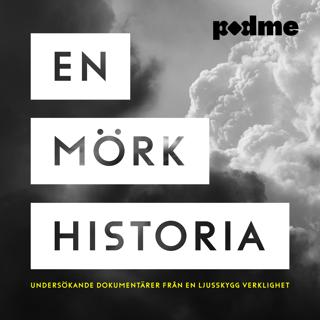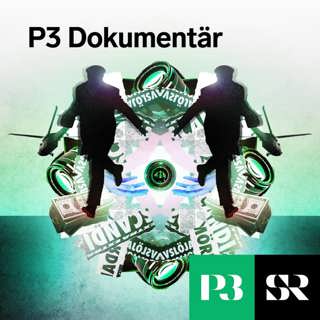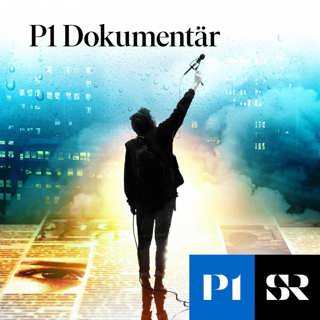
Replacing the Panchen Lama
On 29 November 1995, Tibetan Buddhist leaders attended a secret ceremony in the Tibetan capital, Lhasa. They were present to witness the choice of the next Panchen Lama, a position in Tibetan Buddhism second in importance to the Dalai Lama. They were met by Chinese armed guards, sent to ensure Chinese influence over the choice of Panchen Lama. The Dalai Lama's choice of Panchen Lama had been kidnapped and disappeared six months earlier. Arjia Rinpoche, a senior Tibetan Lama, was at the ceremony. He speaks to Alex Strangwayes-Booth. This is a CTVC production.Eye-witness accounts brought to life by archive. Witness History is for those fascinated by the past. We take you to the events that have shaped our world through the eyes of the people who were there. For nine minutes every day, we take you back in time and all over the world, to examine wars, coups, scientific discoveries, cultural moments and much more. Recent episodes explore everything from football in Brazil, the history of the ‘Indian Titanic’ and the invention of air fryers, to Public Enemy’s Fight The Power, subway art and the political crisis in Georgia. We look at the lives of some of the most famous leaders, artists, scientists and personalities in history, including: visionary architect Antoni Gaudi and the design of the Sagrada Familia; Michael Jordan and his bespoke Nike trainers; Princess Diana at the Taj Mahal; and Görel Hanser, manager of legendary Swedish pop band Abba on the influence they’ve had on the music industry. You can learn all about fascinating and surprising stories, such as the time an Iraqi journalist hurled his shoes at the President of the United States in protest of America’s occupation of Iraq; the creation of the Hollywood commercial that changed advertising forever; and the ascent of the first Aboriginal MP.(Photo: Arjia Rinpoche in 2008. Credit: Mira Oberman/AFP via Getty Images)
23 Jan 10min

The murder of Maurizio Gucci
On 27 March 1995, fashion heir Maurizio Gucci was shot dead outside his office in Milan, Italy.Five people, including his ex-wife, Patrizia Reggiani, and her clairvoyant, were jailed in connection with his murder. The media called it the 'trial of the century'.Rachel Naylor speaks to Carmine Gallo, the police officer who cracked the case. Eye-witness accounts brought to life by archive. Witness History is for those fascinated by the past. We take you to the events that have shaped our world through the eyes of the people who were there. For nine minutes every day, we take you back in time and all over the world, to examine wars, coups, scientific discoveries, cultural moments and much more. Recent episodes explore everything from football in Brazil, the history of the ‘Indian Titanic’ and the invention of air fryers, to Public Enemy’s Fight The Power, subway art and the political crisis in Georgia. We look at the lives of some of the most famous leaders, artists, scientists and personalities in history, including: visionary architect Antoni Gaudi and the design of the Sagrada Familia; Michael Jordan and his bespoke Nike trainers; Princess Diana at the Taj Mahal; and Görel Hanser, manager of legendary Swedish pop band Abba on the influence they’ve had on the music industry. You can learn all about fascinating and surprising stories, such as the time an Iraqi journalist hurled his shoes at the President of the United States in protest of America’s occupation of Iraq; the creation of the Hollywood commercial that changed advertising forever; and the ascent of the first Aboriginal MP.(Photo: Carmine Gallo arresting Patrizia Reggiani, who's wearing his jacket, in 1997. Credit: PA)
22 Jan 10min

Sarin gas attack on the Tokyo subway
In 1995, an obscure Japanese religion launched a chemical attack on the Tokyo metro. Members of the doomsday cult, which called itself Aum Shinrikyo, dropped plastic bags containing sarin liquid on the floors of five different trains and then pierced them. As the liquid evaporated, passengers began inhaling the deadly fumes. Thirteen people were killed and thousands more injured.One of the passengers affected that day was Atsushi Asakahara. He spoke to Chloe Hadjimatheou in 2012.Eye-witness accounts brought to life by archive. Witness History is for those fascinated by the past. We take you to the events that have shaped our world through the eyes of the people who were there. For nine minutes every day, we take you back in time and all over the world, to examine wars, coups, scientific discoveries, cultural moments and much more. Recent episodes explore everything from football in Brazil, the history of the ‘Indian Titanic’ and the invention of air fryers, to Public Enemy’s Fight The Power, subway art and the political crisis in Georgia. We look at the lives of some of the most famous leaders, artists, scientists and personalities in history, including: visionary architect Antoni Gaudi and the design of the Sagrada Familia; Michael Jordan and his bespoke Nike trainers; Princess Diana at the Taj Mahal; and Görel Hanser, manager of legendary Swedish pop band Abba on the influence they’ve had on the music industry. You can learn all about fascinating and surprising stories, such as the time an Iraqi journalist hurled his shoes at the President of the United States in protest of America’s occupation of Iraq; the creation of the Hollywood commercial that changed advertising forever; and the ascent of the first Aboriginal MP.(Photo: Sarin attack. Credit: Getty Images)
21 Jan 9min

Hunting the Unabomber
During a 17-year bombing campaign, an elusive terrorist known as the Unabomber killed three and injured 23 Americans. In 1995, he contacted The New York Times and The Washington Post promising to stop his terror attacks if they published his 35,000-word manifesto. The document explained his aim: to dismantle modern industrial society. On the advice of the FBI and the Attorney General, the newspapers published the manifesto, which led to the Unabomber’s downfall. Dr Kathleen Puckett was an FBI agent who uncovered his identity. She speaks to Ben Henderson.Eye-witness accounts brought to life by archive. Witness History is for those fascinated by the past. We take you to the events that have shaped our world through the eyes of the people who were there. For nine minutes every day, we take you back in time and all over the world, to examine wars, coups, scientific discoveries, cultural moments and much more. Recent episodes explore everything from football in Brazil, the history of the ‘Indian Titanic’ and the invention of air fryers, to Public Enemy’s Fight The Power, subway art and the political crisis in Georgia. We look at the lives of some of the most famous leaders, artists, scientists and personalities in history, including: visionary architect Antoni Gaudi and the design of the Sagrada Familia; Michael Jordan and his bespoke Nike trainers; Princess Diana at the Taj Mahal; and Görel Hanser, manager of legendary Swedish pop band Abba on the influence they’ve had on the music industry. You can learn all about fascinating and surprising stories, such as the time an Iraqi journalist hurled his shoes at the President of the United States in protest of America’s occupation of Iraq; the creation of the Hollywood commercial that changed advertising forever; and the ascent of the first Aboriginal MP.(Photo: Theodore 'Ted' Kaczynski in custody. Credit: Michael Macor/The San Francisco Chronicle via Getty Images)
20 Jan 10min

Drum: Africa’s revolutionary magazine
Drum was considered to be the first African lifestyle magazine with a readership of 40,000 in its 1950s heyday. It was first printed in South Africa in 1951 and became a voice of resistance during Apartheid. Drum hit newsstands in 12 countries across the continent after former World War Two pilot Jim Bailey bought the publication after the first two editions flopped. Jim changed the focus by telling African stories by African writers and shining a spotlight on music, culture and life in the illegal drinking joints known as shebeens.Black writers including Henry Nxumalo, known as Mr Drum, were credited with revolutionising journalism and literature in South Africa. Reena Stanton-Sharma speaks to Jim's son Prospero Bailey. Eye-witness accounts brought to life by archive. Witness History is for those fascinated by the past. We take you to the events that have shaped our world through the eyes of the people who were there. For nine minutes every day, we take you back in time and all over the world, to examine wars, coups, scientific discoveries, cultural moments and much more. Recent episodes explore everything from football in Brazil, the history of the ‘Indian Titanic’ and the invention of air fryers, to Public Enemy’s Fight The Power, subway art and the political crisis in Georgia. We look at the lives of some of the most famous leaders, artists, scientists and personalities in history, including: visionary architect Antoni Gaudi and the design of the Sagrada Familia; Michael Jordan and his bespoke Nike trainers; Princess Diana at the Taj Mahal; and Görel Hanser, manager of legendary Swedish pop band Abba on the influence they’ve had on the music industry. You can learn all about fascinating and surprising stories, such as the time an Iraqi journalist hurled his shoes at the President of the United States in protest of America’s occupation of Iraq; the creation of the Hollywood commercial that changed advertising forever; and the ascent of the first Aboriginal MP.(Photo: The Drum Office in 1954. Credit: Jurgen Schadeberg from The Schadeberg Collection)
17 Jan 10min

'I wrote Schindler's List'
In 1980, Australian author Thomas Keneally stumbled across the story of Oskar Schindler while buying a briefcase in Beverly Hills, in the USA.The owner of the shop, a Polish Jew called Leopold Pfefferberg, told Thomas that a Nazi party member had saved him, his wife and many others from the Holocaust, by employing them in his enamel factory.Thomas tells Rachel Naylor why Oskar was such a compelling subject, full of contradictions, and why he believes his book has lasting appeal. Eye-witness accounts brought to life by archive. Witness History is for those fascinated by the past. We take you to the events that have shaped our world through the eyes of the people who were there. For nine minutes every day, we take you back in time and all over the world, to examine wars, coups, scientific discoveries, cultural moments and much more. Recent episodes explore everything from football in Brazil, the history of the ‘Indian Titanic’ and the invention of air fryers, to Public Enemy’s Fight The Power, subway art and the political crisis in Georgia. We look at the lives of some of the most famous leaders, artists, scientists and personalities in history, including: visionary architect Antoni Gaudi and the design of the Sagrada Familia; Michael Jordan and his bespoke Nike trainers; Princess Diana at the Taj Mahal; and Görel Hanser, manager of legendary Swedish pop band Abba on the influence they’ve had on the music industry. You can learn all about fascinating and surprising stories, such as the time an Iraqi journalist hurled his shoes at the President of the United States in protest of America’s occupation of Iraq; the creation of the Hollywood commercial that changed advertising forever; and the ascent of the first Aboriginal MP.(Photo: Thomas Keneally at his home in Bilgola Beach, Australia, in 1981. Credit: Martin James Brannan/Fairfax Media via Getty Images)
16 Jan 10min

Kobe earthquake
On 17 January 1995, an earthquake devastated the port city of Kobe, in west Japan.More than 6,000 people died and around 300,000 people were left homeless.It was one of the most powerful earthquakes in the country's history. Rachel Naylor speaks to Kiho Park who, aged eight, had to jump off his balcony to escape when his home was damaged. Eye-witness accounts brought to life by archive. Witness History is for those fascinated by the past. We take you to the events that have shaped our world through the eyes of the people who were there. For nine minutes every day, we take you back in time and all over the world, to examine wars, coups, scientific discoveries, cultural moments and much more. Recent episodes explore everything from football in Brazil, the history of the ‘Indian Titanic’ and the invention of air fryers, to Public Enemy’s Fight The Power, subway art and the political crisis in Georgia. We look at the lives of some of the most famous leaders, artists, scientists and personalities in history, including: visionary architect Antoni Gaudi and the design of the Sagrada Familia; Michael Jordan and his bespoke Nike trainers; Princess Diana at the Taj Mahal; and Görel Hanser, manager of legendary Swedish pop band Abba on the influence they’ve had on the music industry. You can learn all about fascinating and surprising stories, such as the time an Iraqi journalist hurled his shoes at the President of the United States in protest of America’s occupation of Iraq; the creation of the Hollywood commercial that changed advertising forever; and the ascent of the first Aboriginal MP.(Photo: A resident walks through the debris in Kobe after the earthquake. Credit: Toru Yamanaka via AFP via Getty Images)
15 Jan 10min

Confronting Betty Ford’s addiction
In 1978, former first lady of the United States, Betty Ford, announced that she had an addiction to alcohol and prescription medication, and would be seeking treatment.Wife of the 38th US president Gerald Ford, her openness and honesty about her addictions was remarkable for its time and was headline news. But it was her daughter, Susan Ford, who had organised the family intervention to confront her mother about her addiction, prompting her to seek help. Susan Ford Bales remembers the moment she knocked on her mother's door early in the morning with the rest of her family and begged her to get help. Betty Ford would go on to establish the Betty Ford Center in Rancho Mirage, California to help others struggling with addiction. Susan Ford tells her and her mother’s story to Colm Flynn. Eye-witness accounts brought to life by archive. Witness History is for those fascinated by the past. We take you to the events that have shaped our world through the eyes of the people who were there. For nine minutes every day, we take you back in time and all over the world, to examine wars, coups, scientific discoveries, cultural moments and much more. Recent episodes explore everything from football in Brazil, the history of the ‘Indian Titanic’ and the invention of air fryers, to Public Enemy’s Fight The Power, subway art and the political crisis in Georgia. We look at the lives of some of the most famous leaders, artists, scientists and personalities in history, including: visionary architect Antoni Gaudi and the design of the Sagrada Familia; Michael Jordan and his bespoke Nike trainers; Princess Diana at the Taj Mahal; and Görel Hanser, manager of legendary Swedish pop band Abba on the influence they’ve had on the music industry. You can learn all about fascinating and surprising stories, such as the time an Iraqi journalist hurled his shoes at the President of the United States in protest of America’s occupation of Iraq; the creation of the Hollywood commercial that changed advertising forever; and the ascent of the first Aboriginal MP.(Photo: Betty Ford. Credit: Getty Images)
14 Jan 10min






















